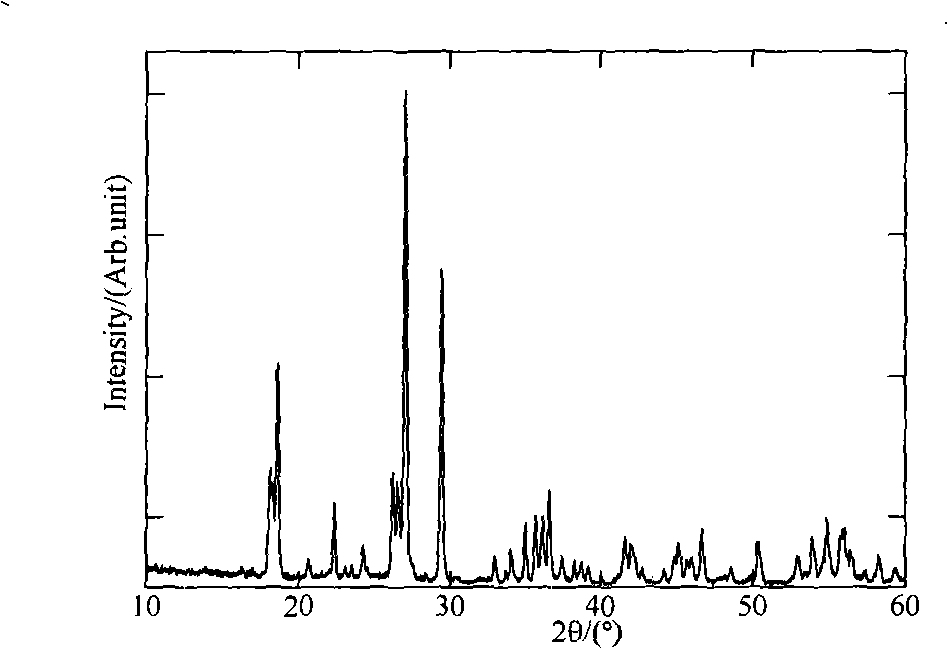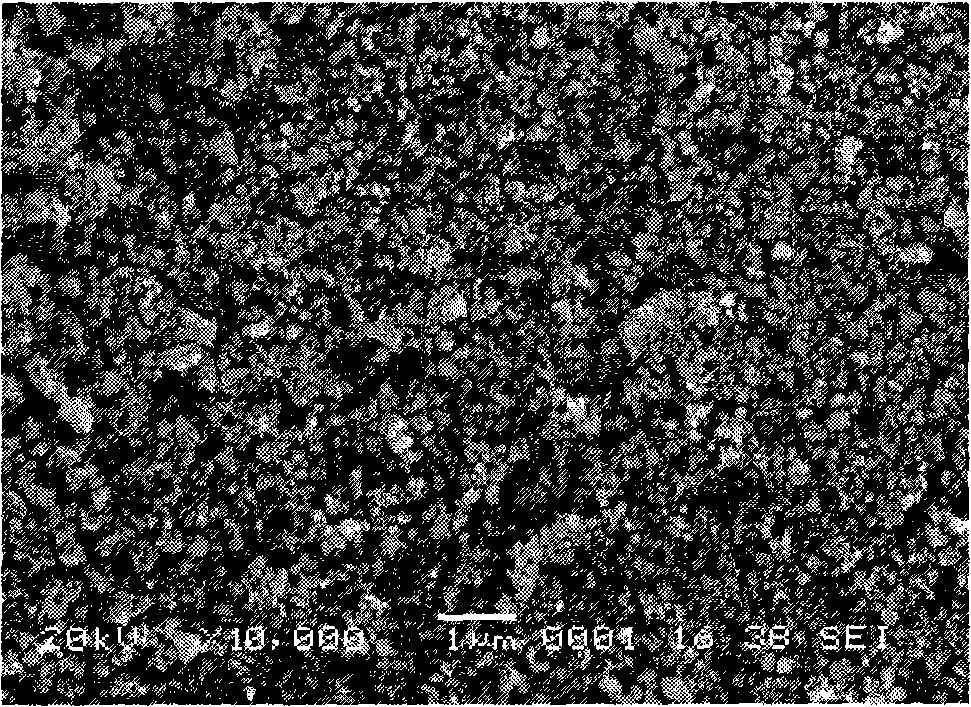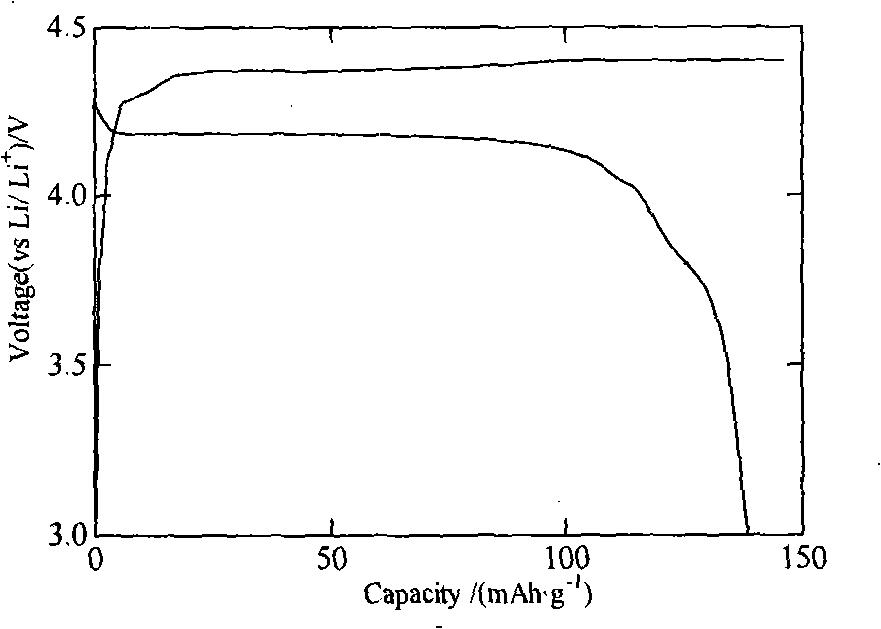Method for preparing lithium ion battery anode material vanadium lithium fluophosphate by one-step solid phase reaction
A lithium ion battery and lithium vanadium fluorophosphate technology, applied in the field of lithium vanadium phosphate, can solve the problems of uneven particle size distribution of synthetic materials, poor electrical conductivity and cycle performance, uneven particle size distribution of materials, etc. The effect of growing up, easy to control, simple and convenient method
- Summary
- Abstract
- Description
- Claims
- Application Information
AI Technical Summary
Problems solved by technology
Method used
Image
Examples
Embodiment 1
[0017] After mixing 0.095mol of vanadium pentoxide powder, 0.21mol of lithium acetate, 0.105mol of ascorbic acid, 0.20mol of ammonium fluoride and 0.21mol of diammonium hydrogen phosphate, they were respectively heated at 450°C, 550°C, 650°C, Sintering at 750°C for 3 hours, then finished LiVPO after cooling 4 F. The obtained products were analyzed by X-ray diffraction, showing that they were all LiVPO 4 F, without any impurity phase, the particle size of the product obtained by SEM is about 0.2 μm. The obtained product was assembled into an experimental button battery to measure its charge-discharge specific capacity and cycle performance. The charge-discharge was carried out at a rate of 1C. The initial discharge capacity and the discharge capacity after 30 cycles are shown in Table 1.
[0018] Experimental condition and result of table 1 embodiment 1
[0019] Numbering
Embodiment 2
[0021] Mix 0.10mol of vanadium pentoxide powder with 0.20mol of lithium fluoride, 0.10mol of adipic acid, 0.21mol of sodium fluoride and 0.20mol of ammonium dihydrogen phosphate, and then sinter at 650°C under the protection of argon. 6, 9 and 12h, the finished product liVPO after cooling 4 F. The obtained products were analyzed by X-ray diffraction, showing that they were all LiVPO 4 F, without any impurity phase, the particle size of the product obtained by SEM is about 0.2 μm. The obtained product was assembled into an experimental button battery to measure its charge-discharge specific capacity and cycle performance. The charge-discharge was carried out at a rate of 1C. The initial discharge capacity and the discharge capacity after 30 cycles are shown in Table 2.
[0022] Experimental condition and result of table 2 embodiment 2
[0023] Numbering
Embodiment 3
[0025] Mix 0.105mol of vanadium pentoxide powder with 0.19mol of lithium chloride, 0.095mol of citric acid, 0.19mol of potassium fluoride and 0.19mol of potassium phosphate. ℃, 750℃ sintering for 12h, after cooling, the finished product LiVPO 4 F. The obtained products were analyzed by X-ray diffraction, showing that they were all LiVPO 4 F, without any impurity phase, the particle size of the product obtained by SEM is about 0.2 μm. The obtained product was assembled into an experimental button battery to measure its charge-discharge specific capacity and cycle performance. The charge-discharge was carried out at a rate of 1C. The initial discharge capacity and the discharge capacity after 30 cycles are shown in Table 3.
[0026] Experimental condition and result of table 3 embodiment 3
[0027] Numbering
PUM
 Login to View More
Login to View More Abstract
Description
Claims
Application Information
 Login to View More
Login to View More - R&D
- Intellectual Property
- Life Sciences
- Materials
- Tech Scout
- Unparalleled Data Quality
- Higher Quality Content
- 60% Fewer Hallucinations
Browse by: Latest US Patents, China's latest patents, Technical Efficacy Thesaurus, Application Domain, Technology Topic, Popular Technical Reports.
© 2025 PatSnap. All rights reserved.Legal|Privacy policy|Modern Slavery Act Transparency Statement|Sitemap|About US| Contact US: help@patsnap.com



